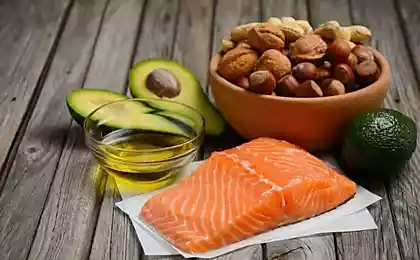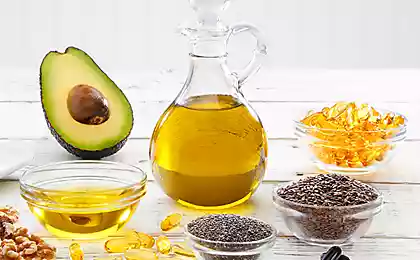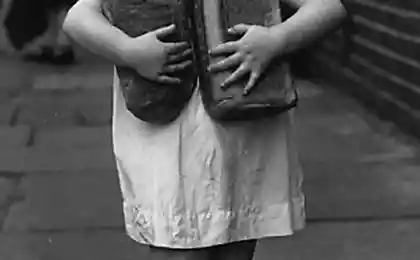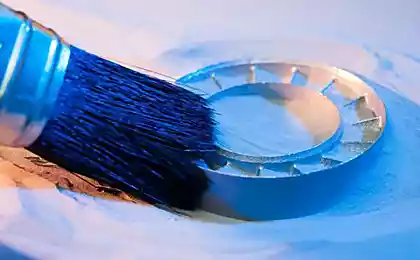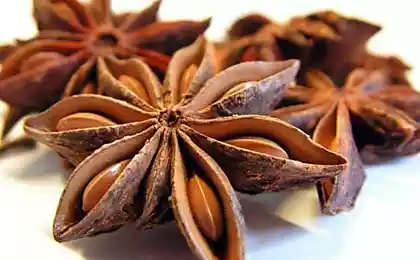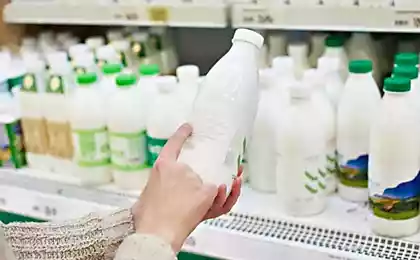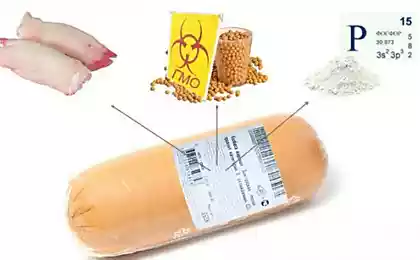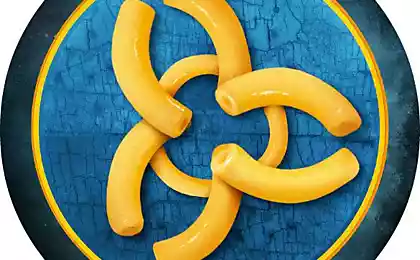590
Dyes and TRANS fats — adult confectionery
The inspection conducted by experts of the Roskontrol, showed that pastry is one of those product categories, and labels that need to be studied particularly carefully. Otherwise you risk to be disappointed in your purchase, and even to endanger their own health and the health of their loved ones.
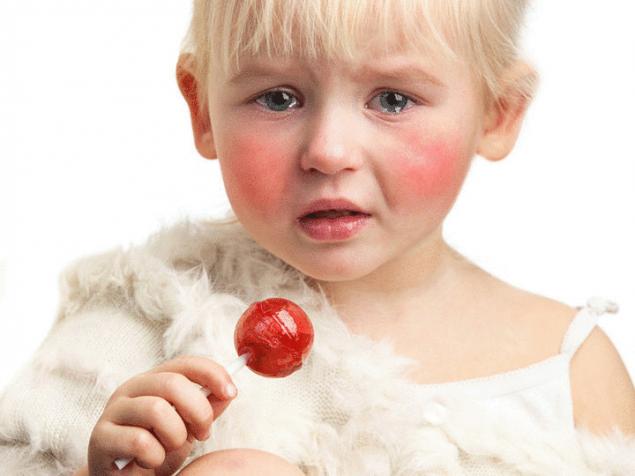
Threat of substitutes the Part of many familiar to us from childhood candy for the last 30-40 years has changed significantly. Confectionery factories in our days skillfully using the achievements of food chemistry. To reduce the cost of products, cocoa butter substitute cheaper palm or palm kernel oil, often hydrogenated fat containing TRANS-isomer fatty acids.
In the composition these components are called innocuous "equivalent to cocoa oil or substitutes of cocoa oil."
TRANS fats recognized by the world Health Organization most dangerous to human health component of food. Numerous scientific studies have shown that they cause atherosclerosis and greatly increases the risk of heart attacks and strokes. The who has called for the total rejection of the use of TRANS fats in food products around the world, but in our country these fats are still a common ingredient in many products.
If the composition of the specified substitute or equivalent of cocoa butter, margarine, confectionary fat, it may mean that the product contains TRANS fats, dangerous for health!How to read composition? The problem is that to read a part of many confectionery products is not easy.
Take, for example, candies that are sold by weight — known "Mask" ("Rotfront") or "Kara-Kum" ("Red October"). In the USSR they were made according to GOST, and if you buy the products of a particular brand, we always knew it would be high quality and tasty chocolates.
Many people now habitually trust the brand and don't even think about making these candies these days. And those and others contain substitutions (or equivalents) of cocoa butter. Beyond that, emulsifiers, flavors and other food additives.

Some information on composition can be found on the edge of the wrapper, but to read it, you will have to open candy. Or ask the seller to show the label pasted on the transport packaging — a box of chocolates.
This applies to almost all candy sold by weight. And cheap colored lollipops Lollipops Roshenconfectionery factory "Roshen", and to expensive chocolates on the basis of fruits and nuts "Coconut" and "Prunes" from OOO "Mikaella".
On the wrappers of the sweets "Stolichnye shtuchki" (LLC "MOK-Proizvodstvo") do not have information about the product, except for brands and taste — the nougat with cranberries.
However, formally a violation of this marking of chocolates is not. It is assumed that the seller (and sometimes the buyer) is weighed and placed on a package label with all the data. It is hoped that the text of this label store completely takes all the necessary data from the box.
Unfortunately, the same situation — with pastries that are not sold in bulk and in consumer packaging. Very often almost impossible to read prior to purchase. And this applies to sweets, who often buy children.
For example, the"Kinder-surprise" (manufacturer JSC "Ferrero Russi"). Important consumer information on the composition hidden in the folds of the foil package, and you can read it, only straightened the foil.

On the packaging of the other children's "surprise" sugar plum "Smeshariki" ("Sweetexim") the font is so small that to read the text is simply unrealistic. To be clear: the font size of the text you are now reading was 10.5 points. Now imagine the font size of 3 points! This font written composition and nutrient values of the product.
We took pictures of the packaging of "Smeshariki" on the big screen of the monitor read the ingredients: sugar, maltodextrin, glucose syrup, flowing agent, acidity regulator, flavourings, colourings. Practically, the sweetness of my sugar and food additives. But who of the users will be able to read it?
Sugar dragees Angry Birds (ZAO "Elysium") is practically a twin of"Smeshariki". Again a font size less than 3 points, and even placed the information on the deformed shrink film, and certain elements of the text to read is simply impossible.
Similar problem chocolate products Chupa-Chups: data located in the folds of the foil, and read them before buying will not work.
In the folds of the packaging material hidden from the eyes of consumers product data and manufacturers of cakes "7 days Cake Bar". Before opening the package to read the composition again is unrealistic. Importantly, the composition of the cupcake is not harmless: it contains already mentioned above, hydrogenated fats and alcohol, which are prohibited to use in the production of children's products.
However, the product is not positioned as children. Unlike cookies "Super-kontik" of JSC "Conti-Rus". The weld on the package is made in such a way that the product can be read is that in the Kazakh language. In Russian it is written in the beginning of the list, respectively, located at the very top, under the fold of the package.
The product packaging is quite big, and it was quite possible to place the information in a convenient for consumers. Instead, the manufacturer chose on the front side of the label is to place a beautiful picture and composition to write in small print where it is not visible.
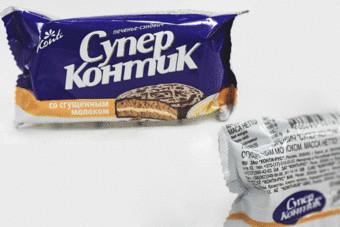
Note that this cookies also have hydrogenated fats that are used in the manufacture of children's products.
Has surprised experts and brand products Fineti — "Paste from hazelnut" and "Waffle rolls". Data on the composition and nutritional value is, and even the font readable, but just one problem — the text in English. To read the same in Russian, you need to pass a quest: to pay for the goods at the checkout, open the lid and retrieve a toy. And if some components in the composition does not suit you? The manufacturer apparently doesn't matter. You've already paid for the purchase.
The composition of cakes and pastries too, sometimes almost impossible to read. Here label cake "Anthill" of the brand Mirel. Composition printed very small, illegible print in black on a brown background.
Only people with perfect eyesight can read that the product contains hydrogenated fats, preservatives, dyes and other unhealthy ingredients and additives.
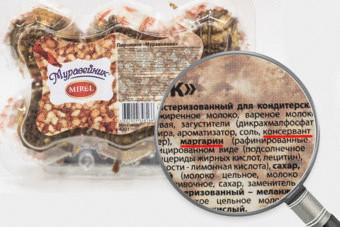
Caution — the colors! Few know that in the sweets that we buy children, can be dangerous dyes. As a result of scientific studies have shown that dyes azorubin (Е122), quinoline yellow (E104), yellow "sunset" FCF (E110), red charming AC (E129), Ponceau 4R (E124) and tartrazine (E102) can cause attention deficit and hyperactivity disorder (ADHD) in children. Children who frequently eat foods containing these dyes, become overly active, can't concentrate, to focus, accordingly, worse in school, bad at remembering information.
That is why in the technical regulations of the Customs Union TR CU 022/2011 "Food products in part of its marking" there is a requirement that manufacturers are required to put on the label a warning label on these dyes: "contains dye (dye), which can have a negative effect on activity and attention in children".
The dyes contained in many confectionery products, make children attention deficit disorder and hyperactivity. Remember the indices are: E102, E104, E110, Е122, E124, E129. Experts have identified several foods that contain these dyes, and no warning labels were not:
Candy You Mix: bean "milk chocolate glaze" and "spaghetti strawberry" production of confectionery "Zolotaya Rus". In the composition of the tablets 4 of 6 the above colors! In "spaghetti" — single (red E129).
Candy Woogie, TD "Carabus". The label says only that the product contains some dyes, but what is the manufacturer of hid. Among them could be the ones which are included in the list of unsafe.
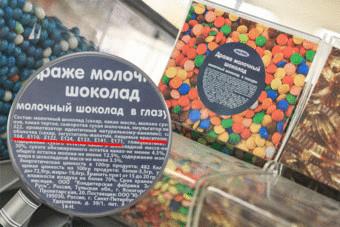
Cotton candy "Happy children" was also "tinted" artificial dyes. The composition is "food coloring-flavoring for making candy floss "Flossine". From publicly available information on the Internet we know that this comprehensive Supplement contains dyes E102 (tartrazine), E110 (yellow "a sunset) and E129 (red charming). No warning signs, alas, no, although the product is clearly positioned as a children's. Pseudobetckea products Many manufacturers use various tricks to give their products for children.
For example, "Butter" waffles of production of JSC "Volzhsky Pekar". On the label a child's drawing with a picture of a child and the words "As a child!". This design gives consumers the impression that the product is suitable for children. In fact, these wafers also contain the already mentioned us hydrogenated fats that are used in the manufacture of children's products.
Another pseudobetckea product wafers with fatty fillings "Artek". Information on the composition printed black font on a dark blue background, and the composition again harmful hydrogenated fats.
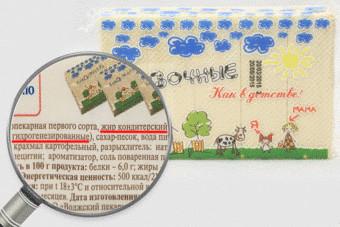
In confections that look like children, often are invalid for children ingredients: hydrogenated fats, preservatives, alcohol. On the packaging of the cookies with raisins "ozbi Family" from the Ostankino factory of dry baked and confectionary goods, we see a happy family and a child that eats these cookies. Composition in addition to hydrogenated fats — preservative sorbic acid, which are not allowed in the diet of children.
The label "Butter" toffee from KF "Hope" also depicts a the child, and gives the false impression that this is a children's product. But it isn't margarine.
On the shelf cakes, we also found pseudobetckea product — cake "Sweet zoo Monkey", "we Palycha." The name and design of the cake suggests that it for children, but it is not so: he, too, must have for children is a preservative.
If in the candy Department, you'll see a product whose label depicts a child or have a child's drawing, it does not mean that the product is possible to buy children! The label specialized products for children definitely, there is a corresponding inscription — "the product for baby food" — as the requirements for children's products. published
P. S. And remember, only by changing their consumption — together we change the world! ©
Source: roscontrol.com/project/article/zachem-chitat-etiketki-konditerskih-izdeliy/

Threat of substitutes the Part of many familiar to us from childhood candy for the last 30-40 years has changed significantly. Confectionery factories in our days skillfully using the achievements of food chemistry. To reduce the cost of products, cocoa butter substitute cheaper palm or palm kernel oil, often hydrogenated fat containing TRANS-isomer fatty acids.
In the composition these components are called innocuous "equivalent to cocoa oil or substitutes of cocoa oil."
TRANS fats recognized by the world Health Organization most dangerous to human health component of food. Numerous scientific studies have shown that they cause atherosclerosis and greatly increases the risk of heart attacks and strokes. The who has called for the total rejection of the use of TRANS fats in food products around the world, but in our country these fats are still a common ingredient in many products.
If the composition of the specified substitute or equivalent of cocoa butter, margarine, confectionary fat, it may mean that the product contains TRANS fats, dangerous for health!How to read composition? The problem is that to read a part of many confectionery products is not easy.
Take, for example, candies that are sold by weight — known "Mask" ("Rotfront") or "Kara-Kum" ("Red October"). In the USSR they were made according to GOST, and if you buy the products of a particular brand, we always knew it would be high quality and tasty chocolates.
Many people now habitually trust the brand and don't even think about making these candies these days. And those and others contain substitutions (or equivalents) of cocoa butter. Beyond that, emulsifiers, flavors and other food additives.

Some information on composition can be found on the edge of the wrapper, but to read it, you will have to open candy. Or ask the seller to show the label pasted on the transport packaging — a box of chocolates.
This applies to almost all candy sold by weight. And cheap colored lollipops Lollipops Roshenconfectionery factory "Roshen", and to expensive chocolates on the basis of fruits and nuts "Coconut" and "Prunes" from OOO "Mikaella".
On the wrappers of the sweets "Stolichnye shtuchki" (LLC "MOK-Proizvodstvo") do not have information about the product, except for brands and taste — the nougat with cranberries.
However, formally a violation of this marking of chocolates is not. It is assumed that the seller (and sometimes the buyer) is weighed and placed on a package label with all the data. It is hoped that the text of this label store completely takes all the necessary data from the box.
Unfortunately, the same situation — with pastries that are not sold in bulk and in consumer packaging. Very often almost impossible to read prior to purchase. And this applies to sweets, who often buy children.
For example, the"Kinder-surprise" (manufacturer JSC "Ferrero Russi"). Important consumer information on the composition hidden in the folds of the foil package, and you can read it, only straightened the foil.

On the packaging of the other children's "surprise" sugar plum "Smeshariki" ("Sweetexim") the font is so small that to read the text is simply unrealistic. To be clear: the font size of the text you are now reading was 10.5 points. Now imagine the font size of 3 points! This font written composition and nutrient values of the product.
We took pictures of the packaging of "Smeshariki" on the big screen of the monitor read the ingredients: sugar, maltodextrin, glucose syrup, flowing agent, acidity regulator, flavourings, colourings. Practically, the sweetness of my sugar and food additives. But who of the users will be able to read it?
Sugar dragees Angry Birds (ZAO "Elysium") is practically a twin of"Smeshariki". Again a font size less than 3 points, and even placed the information on the deformed shrink film, and certain elements of the text to read is simply impossible.
Similar problem chocolate products Chupa-Chups: data located in the folds of the foil, and read them before buying will not work.
In the folds of the packaging material hidden from the eyes of consumers product data and manufacturers of cakes "7 days Cake Bar". Before opening the package to read the composition again is unrealistic. Importantly, the composition of the cupcake is not harmless: it contains already mentioned above, hydrogenated fats and alcohol, which are prohibited to use in the production of children's products.
However, the product is not positioned as children. Unlike cookies "Super-kontik" of JSC "Conti-Rus". The weld on the package is made in such a way that the product can be read is that in the Kazakh language. In Russian it is written in the beginning of the list, respectively, located at the very top, under the fold of the package.
The product packaging is quite big, and it was quite possible to place the information in a convenient for consumers. Instead, the manufacturer chose on the front side of the label is to place a beautiful picture and composition to write in small print where it is not visible.

Note that this cookies also have hydrogenated fats that are used in the manufacture of children's products.
Has surprised experts and brand products Fineti — "Paste from hazelnut" and "Waffle rolls". Data on the composition and nutritional value is, and even the font readable, but just one problem — the text in English. To read the same in Russian, you need to pass a quest: to pay for the goods at the checkout, open the lid and retrieve a toy. And if some components in the composition does not suit you? The manufacturer apparently doesn't matter. You've already paid for the purchase.
The composition of cakes and pastries too, sometimes almost impossible to read. Here label cake "Anthill" of the brand Mirel. Composition printed very small, illegible print in black on a brown background.
Only people with perfect eyesight can read that the product contains hydrogenated fats, preservatives, dyes and other unhealthy ingredients and additives.

Caution — the colors! Few know that in the sweets that we buy children, can be dangerous dyes. As a result of scientific studies have shown that dyes azorubin (Е122), quinoline yellow (E104), yellow "sunset" FCF (E110), red charming AC (E129), Ponceau 4R (E124) and tartrazine (E102) can cause attention deficit and hyperactivity disorder (ADHD) in children. Children who frequently eat foods containing these dyes, become overly active, can't concentrate, to focus, accordingly, worse in school, bad at remembering information.
That is why in the technical regulations of the Customs Union TR CU 022/2011 "Food products in part of its marking" there is a requirement that manufacturers are required to put on the label a warning label on these dyes: "contains dye (dye), which can have a negative effect on activity and attention in children".
The dyes contained in many confectionery products, make children attention deficit disorder and hyperactivity. Remember the indices are: E102, E104, E110, Е122, E124, E129. Experts have identified several foods that contain these dyes, and no warning labels were not:
Candy You Mix: bean "milk chocolate glaze" and "spaghetti strawberry" production of confectionery "Zolotaya Rus". In the composition of the tablets 4 of 6 the above colors! In "spaghetti" — single (red E129).
Candy Woogie, TD "Carabus". The label says only that the product contains some dyes, but what is the manufacturer of hid. Among them could be the ones which are included in the list of unsafe.

Cotton candy "Happy children" was also "tinted" artificial dyes. The composition is "food coloring-flavoring for making candy floss "Flossine". From publicly available information on the Internet we know that this comprehensive Supplement contains dyes E102 (tartrazine), E110 (yellow "a sunset) and E129 (red charming). No warning signs, alas, no, although the product is clearly positioned as a children's. Pseudobetckea products Many manufacturers use various tricks to give their products for children.
For example, "Butter" waffles of production of JSC "Volzhsky Pekar". On the label a child's drawing with a picture of a child and the words "As a child!". This design gives consumers the impression that the product is suitable for children. In fact, these wafers also contain the already mentioned us hydrogenated fats that are used in the manufacture of children's products.
Another pseudobetckea product wafers with fatty fillings "Artek". Information on the composition printed black font on a dark blue background, and the composition again harmful hydrogenated fats.

In confections that look like children, often are invalid for children ingredients: hydrogenated fats, preservatives, alcohol. On the packaging of the cookies with raisins "ozbi Family" from the Ostankino factory of dry baked and confectionary goods, we see a happy family and a child that eats these cookies. Composition in addition to hydrogenated fats — preservative sorbic acid, which are not allowed in the diet of children.
The label "Butter" toffee from KF "Hope" also depicts a the child, and gives the false impression that this is a children's product. But it isn't margarine.
On the shelf cakes, we also found pseudobetckea product — cake "Sweet zoo Monkey", "we Palycha." The name and design of the cake suggests that it for children, but it is not so: he, too, must have for children is a preservative.
If in the candy Department, you'll see a product whose label depicts a child or have a child's drawing, it does not mean that the product is possible to buy children! The label specialized products for children definitely, there is a corresponding inscription — "the product for baby food" — as the requirements for children's products. published
P. S. And remember, only by changing their consumption — together we change the world! ©
Source: roscontrol.com/project/article/zachem-chitat-etiketki-konditerskih-izdeliy/
The Dutch 10 days, independent of the network
Gasoline is no longer needed – the cars on compressed air
